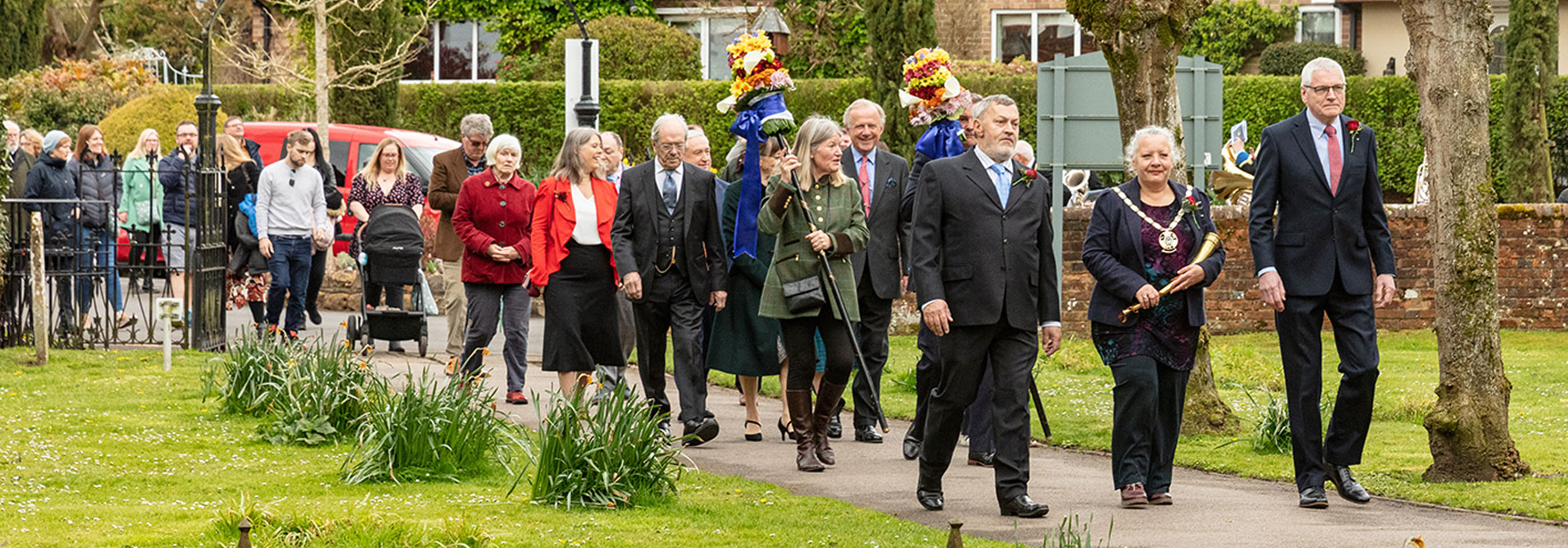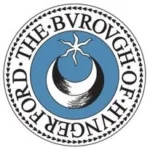The official badge of office of the Constable of the Town and Manor of Hungerford is a brass or copper horn of which we have three.
The original horn is purported to have been presented to the Town by John O’Gaunt, Duke of Lancaster, in the 14th Century to mark the granting of fishing rights to the commoners. When this horn grew fragile it was replaced in the 17th century by the Lucas Horn, which was replaced in the 20th century.
All three horns are still in the possession of the Town and Manor and in 2019 we were approached by Dr Louise Bacon of the Archaeological Institute at UCL who is conducting a study of the few surviving examples of medieval Burghmote horns.
The word ‘Burghmote’ is derived from ‘Burgh’ meaning town or borough and ‘mote’ meaning meeting, thus the horns were sounded to call townspeople to a meeting just as we have been doing at Hocktide for hundreds of years. Dr Bacon visited Hungerford on 9th October 2019 and examined the horns at the Town Hall.
All three horns are interesting in their own right but not surprisingly the original ‘John O’Gaunt’ horn is the most important to us.


In April 2022 Dr. Bacon returned to Hungerford accompanied by Mike Dobby a metallurgist and former Chief Chemist at the Sheffield Assay Office who carried out an analysis of the metal composition of the horns, but this was somewhat inconclusive. On 19th January 2023, Julian Tubb (the Bellman) and ex-Constable Peter Joseph visited London at the invitation of Dr. Louise Bacon to have the 3 Burghmote Horns analysed. Using the latest equipment, they were x-rayed to reveal their structure and to try to make clearer the wording on them. Their hosts for the day were Dr. Louise Bacon, Independent Academic Researcher Sarah Wills, MSC Researcher at UCL Dr. Mike Charlton, Lecturer in Archaeomaterials at UCL and Manager of the Lab.
The day started with the use of scanners that give off small doses of radiation, (so Julian and Peter were ensconced behind a taped off area). This device was used to scan along the sections of each horn to reveal their constituent elements. The John O’Gaunt horn appears to be primarily Copper, Zinc and Tin, which is consistent with a timeframe of 13th/14th Century, whilst the Lucas Horn was predominantly an alloy made up of Copper and Tin, which was similar to the Newton Horn made by Robin Tubb in the 21st century.


The second part of the day, after lunch, was the use of a high intensity x-ray scanner (like an oven), which was used to look at the John O’Gaunt and Lucas Horns. These x-rays revealed little additional information on the John O’Gaunt Horn, and despite numerous attempts were unable to reveal any further secrets regarding the text inscriptions. The Lucas horn revealed the damage to the horn and the attempts to repair it with the addition of a metal ring inside the tube.
The team at UCL and Dr. Bacon were very excited to have had the opportunity to undertake this investigation and continue to consider any other ways in which the inscription can be further revealed.






